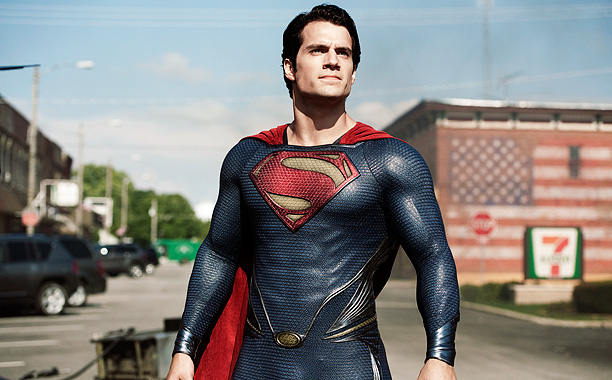Culture
Not solid as “Steel,” but strong

Man of Steel
dir. Zack Snyder
Release Date: Jun 14, 13
- 1
- 2
- 3
- 4
- 5
- 6
- 7
- 8
- 9
- 10
Here’s one thing Zack Snyder’s Man of Steel got right: edge. For all its problems (and there are many), the latest entry in the Superman franchise tackles a number of struggles and issues that were previously nonexistent for Christopher Reeve or Brandon Routh. This isn’t the Kal-El or Clark Kent who offers mid-flight interviews to damsels in distress or saves helicopters from falling off the roof. This is the story of a Kryptonian alien working amongst a cynical, post-9/11 world, where the stakes are high, paranoia rampant, and everyone’s a hair finger away from the trigger. It’s also a tale of a boy struggling with the loss of his identity.
Following the destruction of his home planet, Kal-El (Henry Cavill) is sent to Earth to carry on his prescribed legacy as the last natural son of Krypton. Things go awry, however, when the formidable General Zod (Michael Shannon) escapes from exile in search of a valuable construct only Kal-El inherits. Of course, humanity is on the table, which pushes everyone to accept and turn towards the one entity that can save them. In other words, Earth (read: America) needs to sing “Kumbaya” with Superman.
It’s a mad world in Snyder’s $225 million dollar reboot of the acclaimed hero, but sadly, that chaos translates to the film itself. It doesn’t really know what it wants to be, and it spends so much time trying not to be traditional that it comes off as cold as the Fortress of Solitude. From the get-go, the decision to ape Christopher Nolan’s vision behind The Dark Knight Trilogy for Supes was a dicey move, namely because they’re two remarkably different franchises, regardless of the same brand. Fans have acknowledged this disparity for decades; Superman’s the sun, Batman’s the moon. Man of Steel tries to find an agreeable middle.
It almost does, but fails in execution. The problem lies in the smorgasboard of a screenplay by David S. Goyer, who fights to reignite the excellence of his work on Batman Begins. The core difference is that Begins stuck to a strict, cohesive outline that was committed and tailored to resemble an origin story. Goyer refuses to do this with Steel, leaving the story to crack and crumble like the six dozen buildings destroyed during the film’s exhaustive finale. Tension never strangles, because there’s no formula for it to exist. Characters never come to life because there’s no through-line for relationships. Larger-than-life action sequences explode onscreen with little fanfare because nobody’s had a chance to invest in anything.
That’s the only ballbuster. Everything else feels fair game: Snyder’s painted a portrait that would have elicited a standing ovation from the late co-creators Jerry Siegel and Joe Shuster. Cavill angles the titular hero into a new flight pattern that rotates the stronger sides hallmarked by Smallville’s Tom Welling and both Reeves and Routh. Shannon spooks as Zod, Russell Crowe trumps Marlon Brando’s Jor-El, Amy Adams does what she can as Lois Lane, and Diane Lane and Kevin Costner sell themselves as enviable parents. What’s more, Hans Zimmer found it in his heart to create another book of anthems for another D.C. hero.
All are veritable pieces in a twisted puzzle that shouldn’t have been so complicated, convoluted, and frustrating. Still, there are far more possibilities for the franchise ahead that weren’t there following 2006’s Superman Returns, and that should be enough to excite the fans. As for the passersby? Keep looking to the sky.